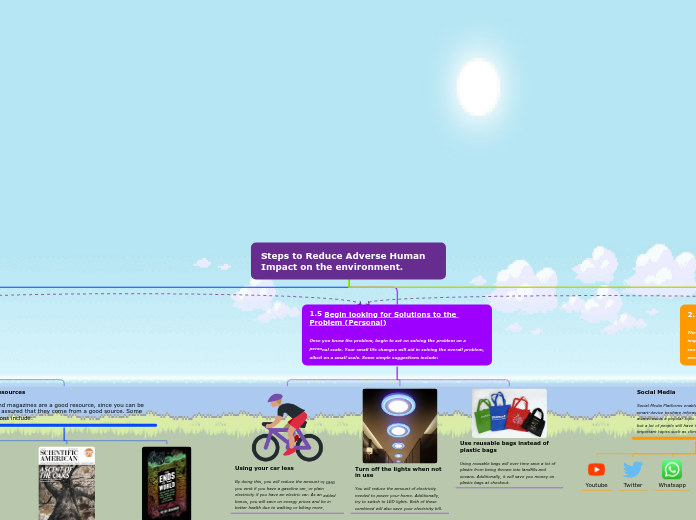Steps to Reduce Adverse Human Impact on the environment.
2.5. Solutions to the Problem (Worldwide)
These are the larger parts to restoring the environment, that are based on multiple people utilising the smaller parts in 1.5. You can think of these as the ultimate goals:
Reduce Materialism
Materialism, or the excessive, unnecessary shopping that current society deems as is needed is one of the biggest contributors to our environmental problems. For example, do you really need a new iPhone 11 XS Max when your older iPhone 10 works just fine? Do you need another sweater to add to your collection of hundreds? The answer is no, you don't. By making unnecessary purchases, you are just using up limited resources on Earth and creating pollution. If all of society was to reject materialistic ideals, the amount of environmental problems would decrease exponentially.
Punish Companies that Promote Materialism
Business is about consumerism, or satisfying the consumer. If the consumer doesn't want to make unnecessary purchases, companies will be forced to change their products and business model. It is a supply and demand game. Those that decide to deny this will be automatically punished with worse sales. For example, if everyone stopped buying more purses after they already had a working one, companies would be forced to stop mass producing purses. Therefore,
Make New Products Less Taxing on the Environment
The final step will be making whatever new, essential and functional products more efficient on resources. This can be done through two main avenues:
Enacting laws that force companies to be more eco-friendly
Buying Products form companies that prioritise the environment
2. Spread Awareness
The next step is to explain the problem to others. Upon doing this, it will inspire others to repeat process 1-2 for themselves. Multiple people contributing small parts to the solution is what will ultimately result in the environment being restored
Physical Interactions
While this may not be possible this year, notifying friends and family through physical interactions (e.g. talking, working together, playing together) is fantastic as you can provide more consistent information. Online, you may not be able to convey your message as well as say, sitting down with a family member after dinner and having a good talk.
Social Media
Social Media Platforms enable almost anyone with a smart-device to share information. Environmental awareness is a popular topic on social media platforms, but a lot of people still have misconceptions about important topics such as climate change.
Instagram
Reddit
Facebook
Whatsapp
Twitter
Youtube
1.5 Begin looking for Solutions to the Problem (Personal)
Once you know the problem, begin to act on solving the problem on a personal scale. Your small life changes will aid in solving the overall problem, albeit on a small scale. Some simple suggestions include:
Use reusable bags instead of plastic bags
Using reusable bags will over time save a lot of plastic from being thrown into landfills and oceans. Additionally, it will save you money on plastic bags at checkout.
Turn off the lights when not in use
You will reduce the amount of electricity needed to power your home. Additionally, try to switch to LED lights. Both of these combined will also save your electricity bill.
Using your car less
By doing this, you will reduce the amount of GHG you emit if you have a gasoline car, or plain electricity if you have an electric car. As an added bonus, you will save on energy prices and be in better health due to walking or biking more.
1. Identify the Problem
You cannot solve a problem if you don't even know it exists. Therefore, you must learn about the impact humans have on the Earth. The easiest resource for this is the internet. Read articles, blogs, and studies
Print Resources
Books and magazines are a good resource, since you can be often be assured that they come from a good source. Some suggestions include:
The Ends of the World (Novel)
Scientific American (Magazine)
National Geographic (Magazine)
The Internet
This is your biggest resource. Read articles, blogs, and scientific journals. Aim to use reliable sources of information. Some possible sites are:
Greenpeace
World Wildlife Federation.
United Nations Climate Action
David Suzuki Foundation
National Geographic









